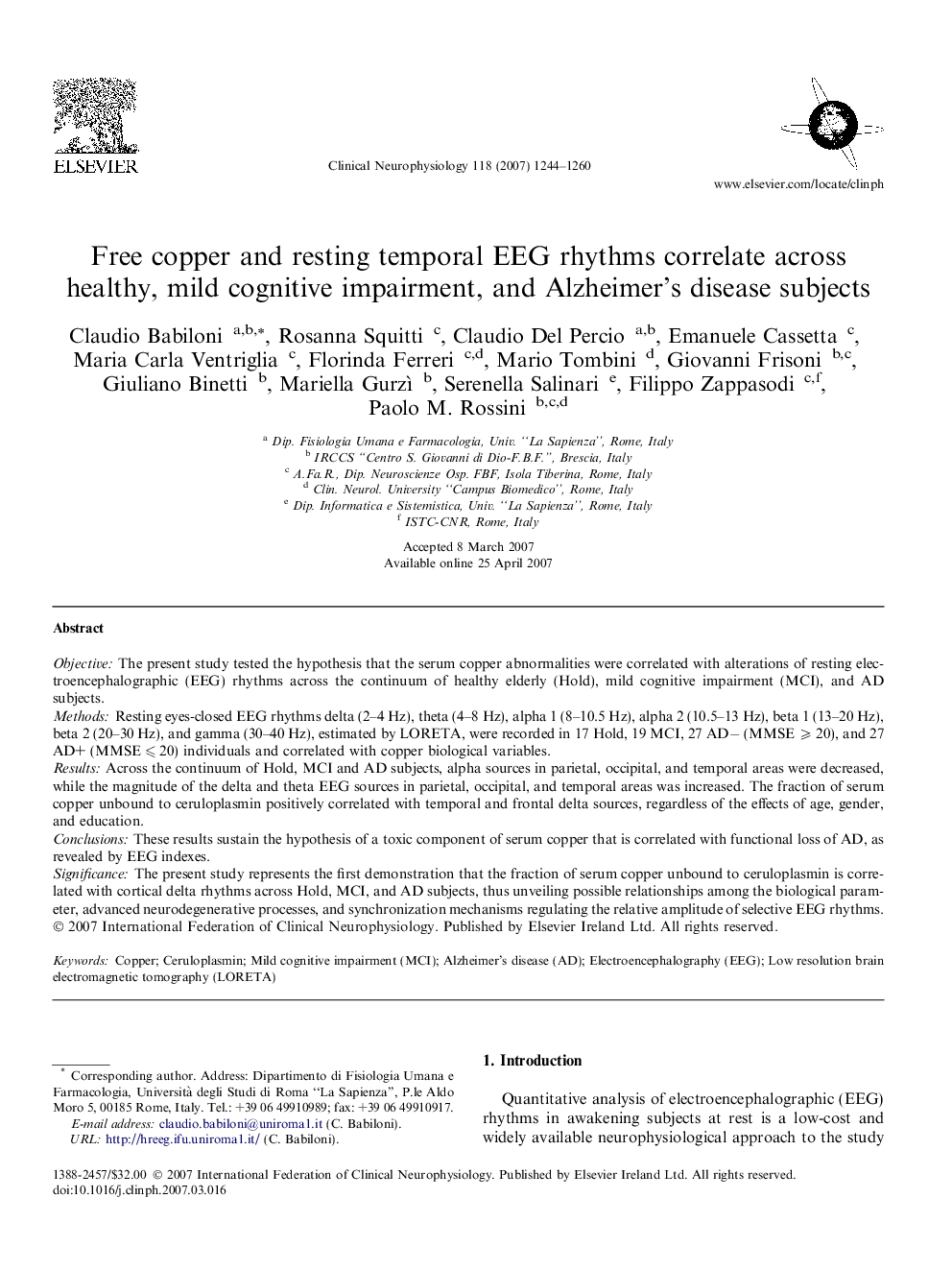| Article ID | Journal | Published Year | Pages | File Type |
|---|---|---|---|---|
| 3047700 | Clinical Neurophysiology | 2007 | 17 Pages |
ObjectiveThe present study tested the hypothesis that the serum copper abnormalities were correlated with alterations of resting electroencephalographic (EEG) rhythms across the continuum of healthy elderly (Hold), mild cognitive impairment (MCI), and AD subjects.MethodsResting eyes-closed EEG rhythms delta (2–4 Hz), theta (4–8 Hz), alpha 1 (8–10.5 Hz), alpha 2 (10.5–13 Hz), beta 1 (13–20 Hz), beta 2 (20–30 Hz), and gamma (30–40 Hz), estimated by LORETA, were recorded in 17 Hold, 19 MCI, 27 AD− (MMSE ⩾ 20), and 27 AD+ (MMSE ⩽ 20) individuals and correlated with copper biological variables.ResultsAcross the continuum of Hold, MCI and AD subjects, alpha sources in parietal, occipital, and temporal areas were decreased, while the magnitude of the delta and theta EEG sources in parietal, occipital, and temporal areas was increased. The fraction of serum copper unbound to ceruloplasmin positively correlated with temporal and frontal delta sources, regardless of the effects of age, gender, and education.ConclusionsThese results sustain the hypothesis of a toxic component of serum copper that is correlated with functional loss of AD, as revealed by EEG indexes.SignificanceThe present study represents the first demonstration that the fraction of serum copper unbound to ceruloplasmin is correlated with cortical delta rhythms across Hold, MCI, and AD subjects, thus unveiling possible relationships among the biological parameter, advanced neurodegenerative processes, and synchronization mechanisms regulating the relative amplitude of selective EEG rhythms.
